Electric Propulsion
Diagnostics for Electric Propulsion Systems
Deep space exploration requires development of large-scale, powerful propulsion systems. Electric propulsion systems are advantageous for these applications, enabling the most economical solution from the propellant utilization standpoint. These reasons drive development of powerful plasma thrusters including the 12.5 kW Hall Effect Rocket with Magnetic Shielding (HERMeS), 100 kW X-3 nested-channel Hall thruster, and 7 kW NEXT-C gridded ion thruster. Non-intrusive diagnostics for thruster exhaust plume parameters are required for further advancement of these propulsion systems.

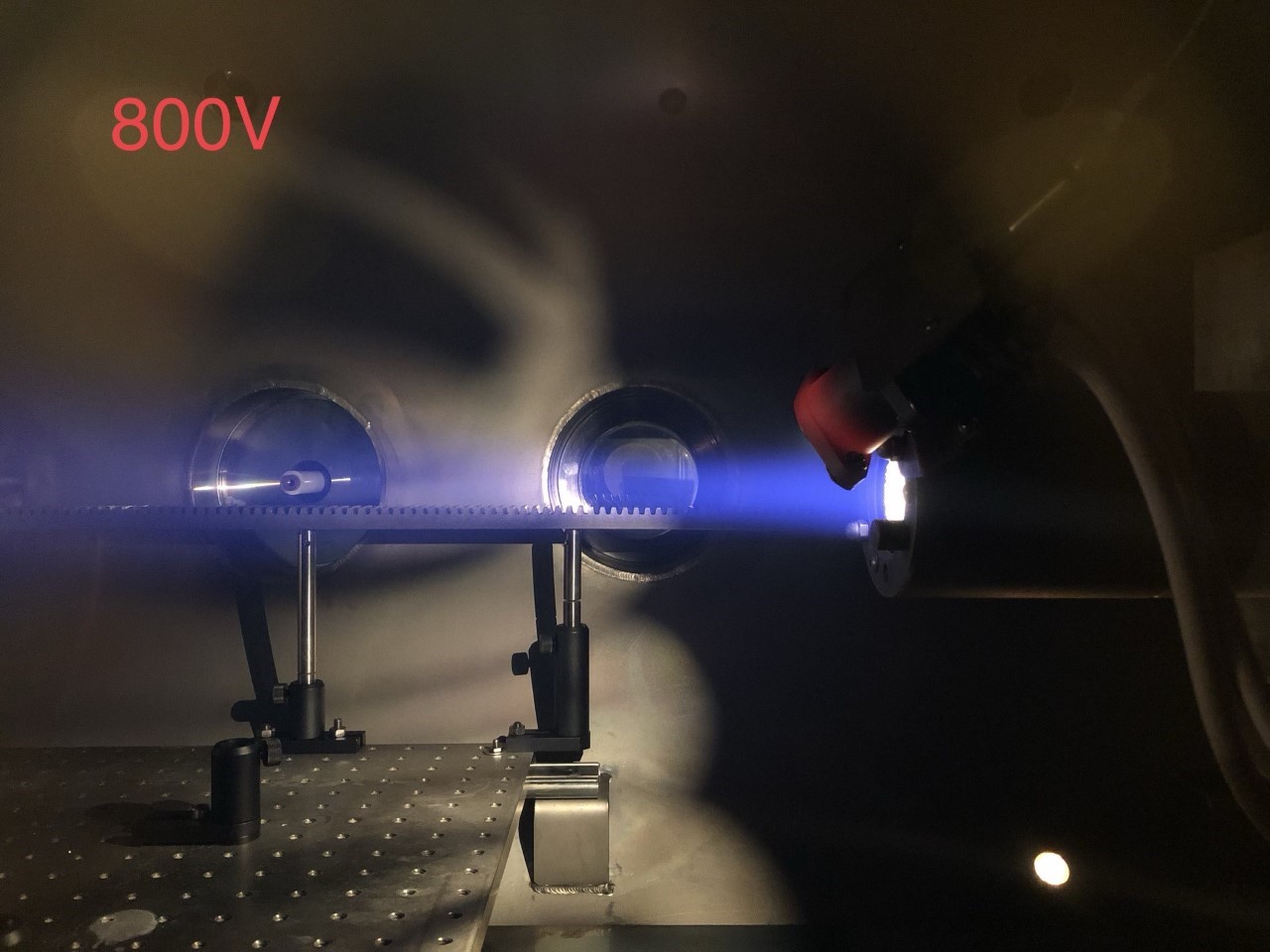
T-100 Hall effect thruster operation (left) and KDC-40 gridded ion accelerator operation (right)
We are working on development of novel non-intrusive laser- and microwave-based diagnostic techniques for plasma thrusters. One technique utilizes a hybrid Resonance-Enhanced-Multi-Photon-Ionization (REMPI) and Microwave-Scattering approach for determination of the absolute number densities of neutral and ionized gaseous species. REMPI enables selective ionization of the species of interest, and microwave beam scattering of the REMPI-induced plasma allows to determine absolute number density of these species. Another approach uses Laser Thomson Scattering, enabling measurements of electron number density and temperature.
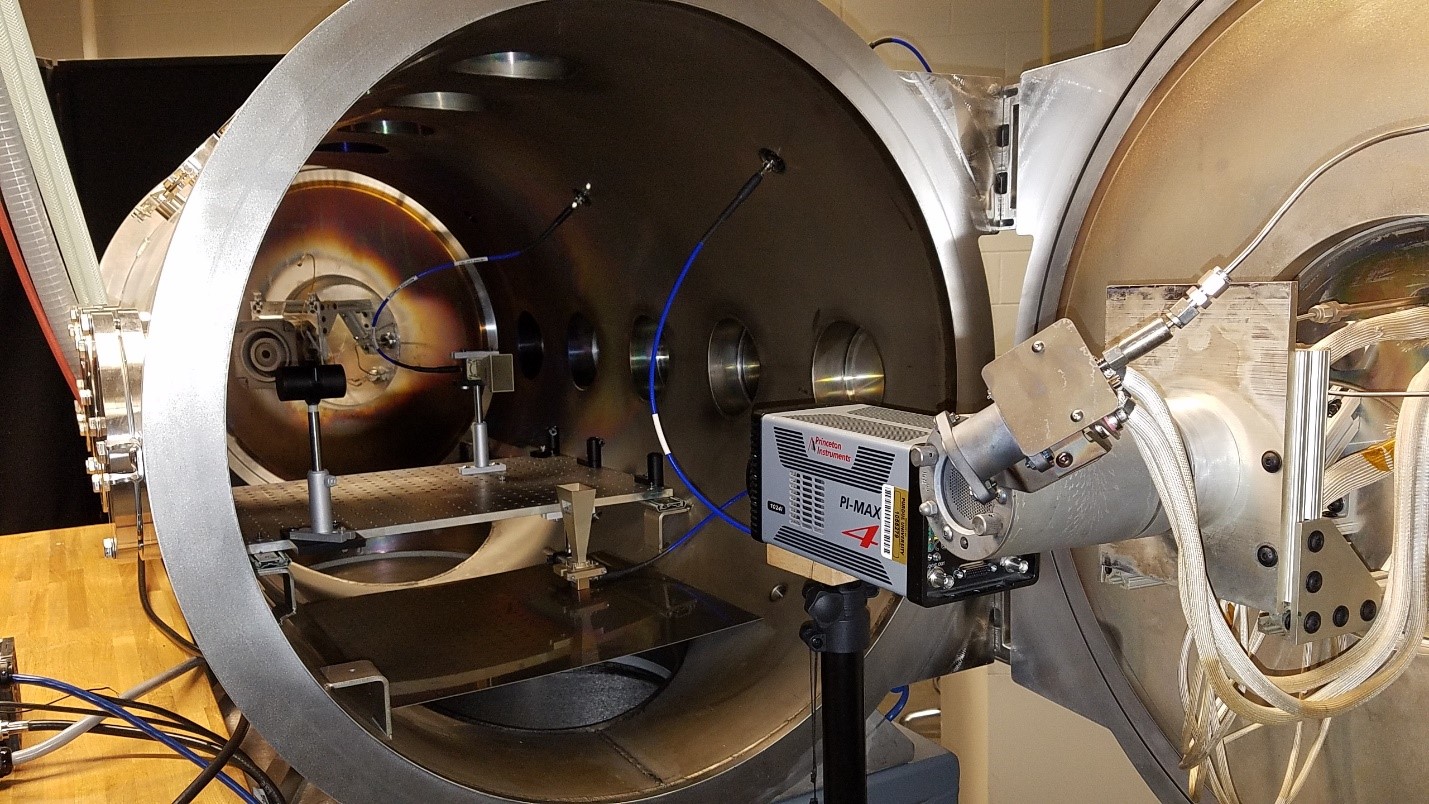
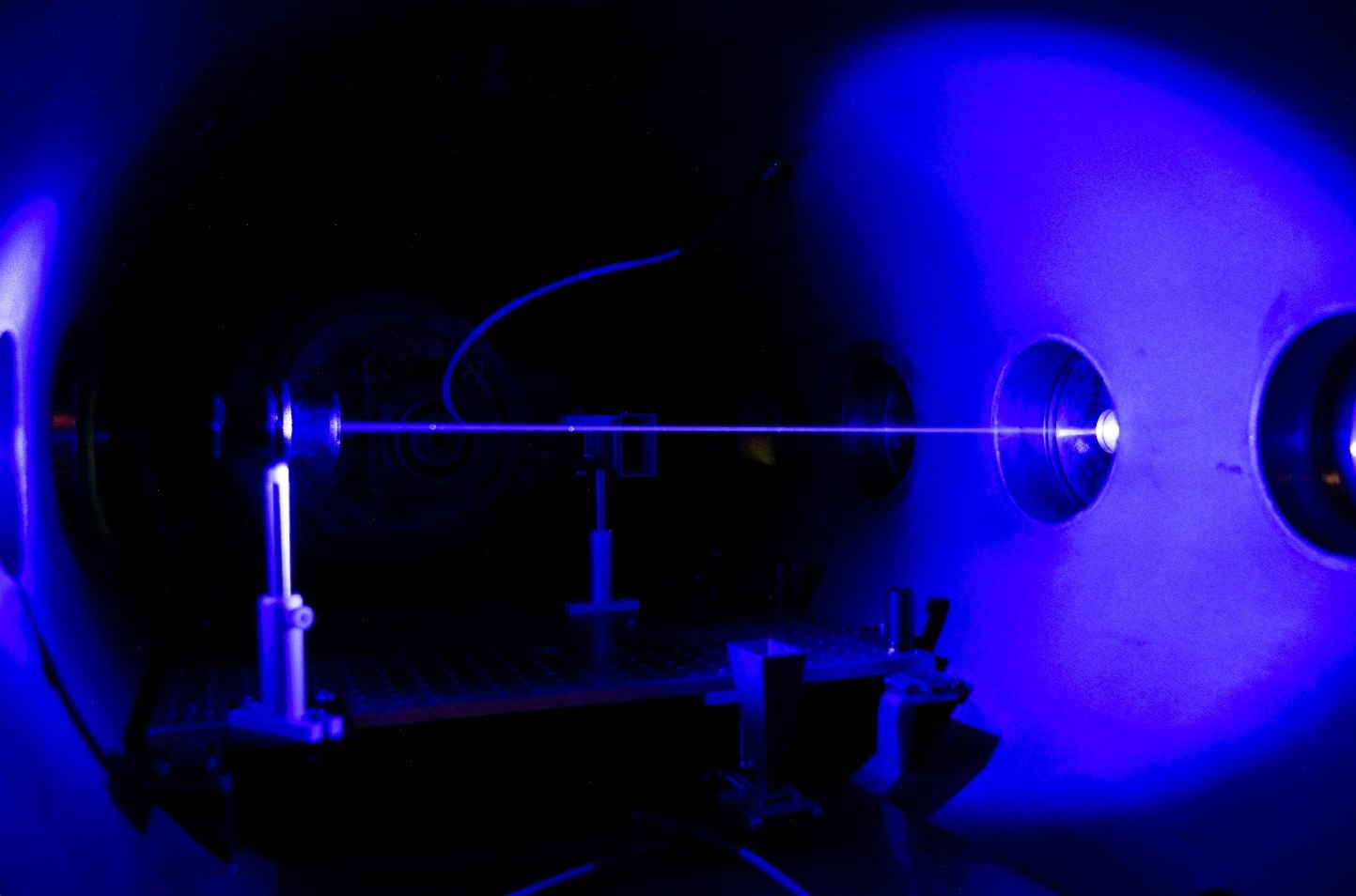
Hall thruster facility equipped with laser/microwave diagnostics

REMPI laser system
Electric Propulsion for CubeSats
Recently, there has been a significant increase in the use of miniature satellites known as CubeSats, which are made up of multiples of 10 cm × 10 cm × 10 cm and mass < 1.3 kg. The number of CubeSat launches has experienced exponential growth since the early 2000s, reaching over 1,000 CubeSats launched as of January 2019. These miniature spacecrafts use platforms that are much smaller than conventional satellites and therefore require compact propulsion systems. Micropropulsion systems for CubeSats are still in their infancy and require significant further development to overcome problems associated with an inability to operate reliably for a long period of time, spacecraft contamination issues, and compact propellant storage.
We are working to advance electric micropropulsion systems for CubeSats. One of the central components of such micropropulsion systems are ignitor subsystems, which are required for the triggering of the overall micropropulsion system. We have modified the classical surface flashover between two metal electrodes over a dielectric surface by minimizing spark energy used for ignition. To this end, the ignitor relies on the utilization of very short nanosecond-long sparks to limit the spark energy and minimize the damage to the ignitor assembly. This system demonstrates stable operation over several million pulses without any damage to the ignitor. Another critical part of the micropropulsion system is the plasma accelerator, which exhausts ionized propellant at high velocities of 10s km/s. We utilize a Lorentz force pulsed plasma accelerator, which operates on a principle similar to that used in railguns. The plasma accelerator operates with the liquid propellant, which can be compactly stored in the tanks and is “green” for the spacecraft. It uses high pulsed currents in the kAmpere range and the plasma jet exhausts from the accelerator at velocities above 30 km/s.
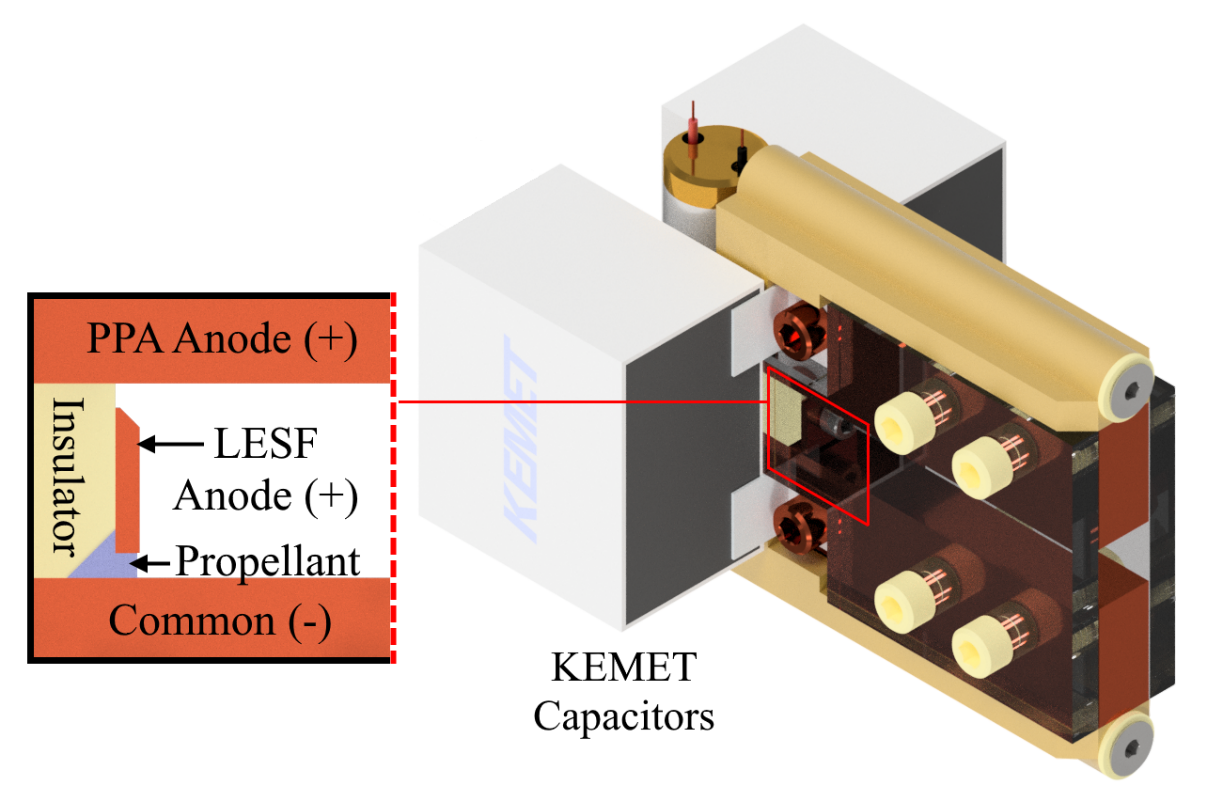
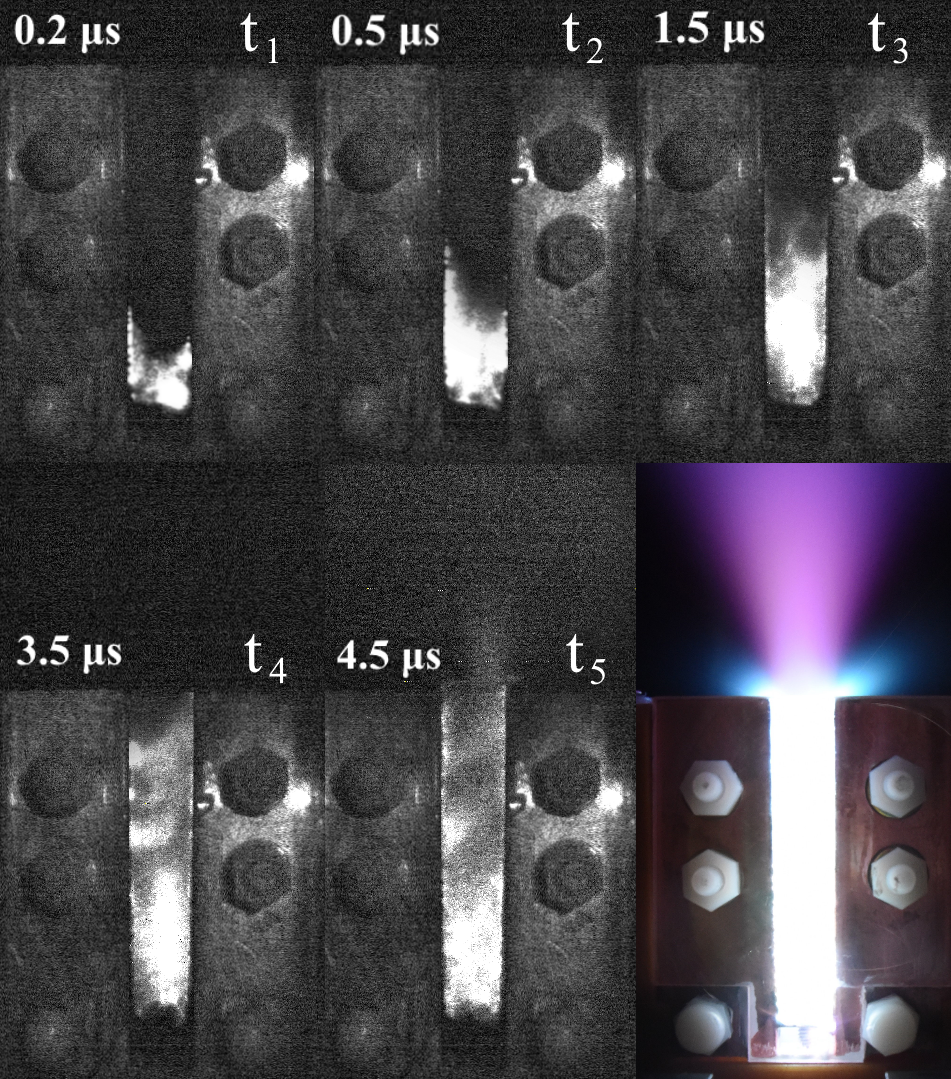
3D Rendering of Liquid-Fed Pulsed Plasma Thruster (LF-PPT) and fast photography of LF-PPT firing event
References:
- Y. Zhang, O. Dary, and A. Shashurin “Low Energy Surface Flashover for Initiation of Electric Propulsion Devices” Plasma Res. Express 1, 015010 (2019).
- R. Patel, Y. Zhang, and A. Shashurin “Liquid-Fed Pulsed Plasma Thruster with Low-Energy Surface Flashover Igniter for Propelling Nanosatellites” J. Propul. Power, accepted (2020).
